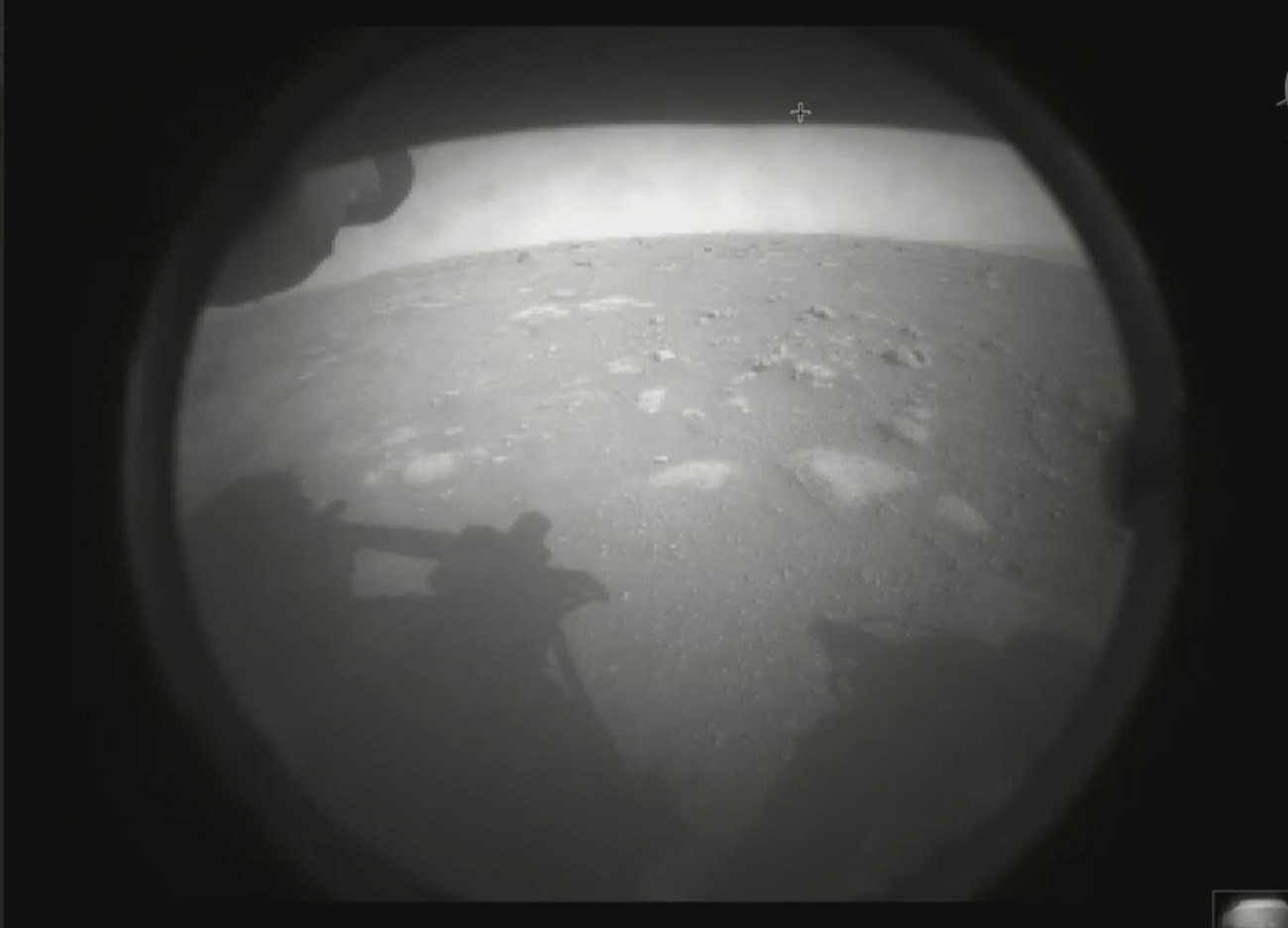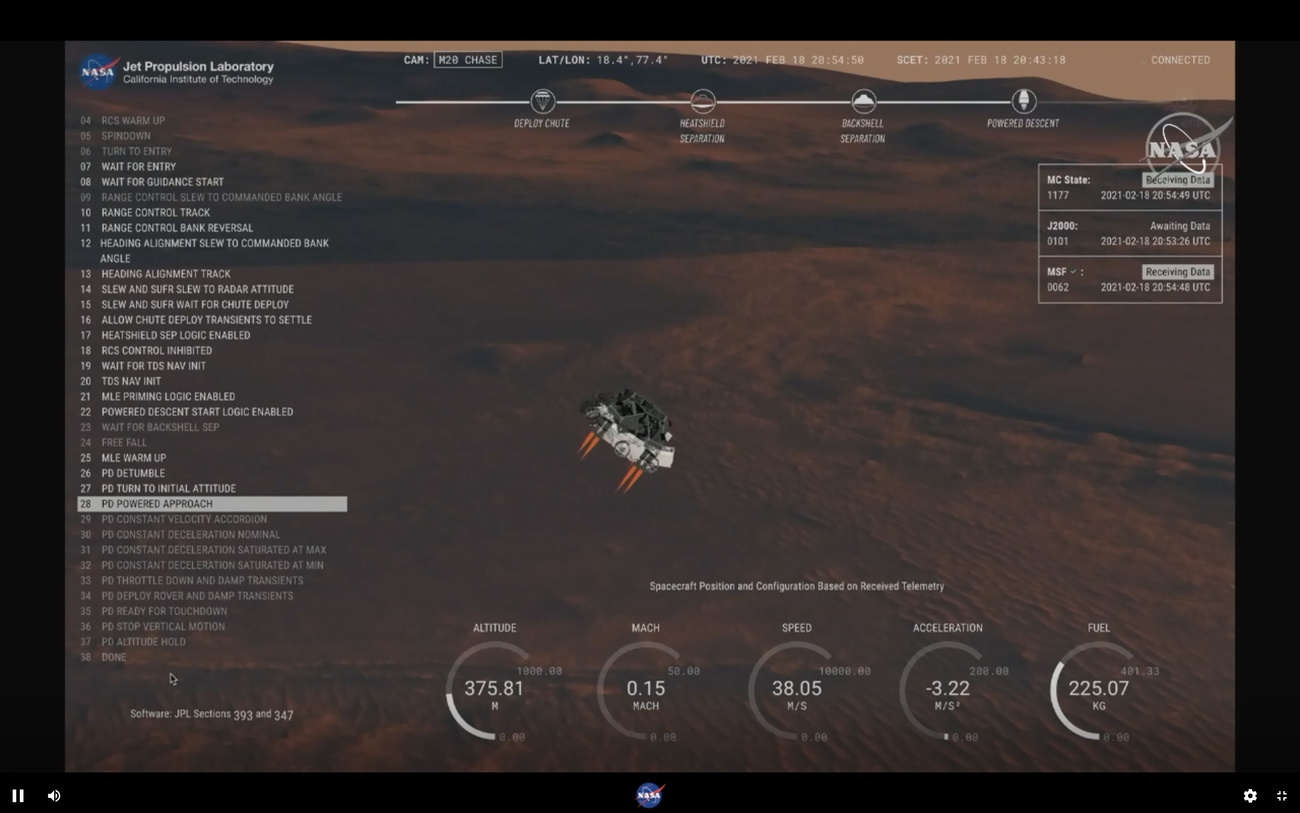
‘Awesome’ to be involved in historic Mars rover landing, says Swiss firm

NASA science rover ‘Perseverance’ has landed safely on Mars as part of its search for traces of microbial life on the Red Planet. Swiss technology will help it handle soil samples and control the first Mars helicopter.
NASA experts celebrated loudly on Thursday at news that the rover had arriveExternal linkd as planned on the floor of Jezero Crater, site of a long-vanished Martian lakebed.
The robotic vehicle sailed through space for nearly seven months, covering 293 million miles (472 million kilometres) before entering the Martian atmosphere at 12,000mph (19,000km/h) to begin its approach to touchdown on the planet’s surface.
The primary aim of the two-year, $2.7-billion (CHF2.4 billion)) space project is to search for possible fossilised signs of microbes that may have flourished on Mars some three billion years ago.

Swiss technology
One of its tasks will be to take up to 30 soil samples, place each of these in a separate container, seal it, and deposit the samples ready for retrieval and return to Earth by later missions.
The Swiss motor manufacturer Maxon, based at Sachseln in the central canton of Obwalden, has provided ten tiny motors that will help the rover’s robotic arm move the samples around.
Eugen Elmiger, CEO of the Maxon Group, and many employees involved in the Mars project followed the landing of the Mars mission live in a virtual chat.
“We are incredibly relieved and happy about the successful landing,” said Elmiger in a statmentExternal link. “Many years of hard work have gone into these Mars drives. Our engineers, together with the specialists at NASA’s Jet Propulsion Laboratory, have repeatedly improved the components and subjected them to all kinds of tests to ensure that they reliably do their job on Mars.”
Maxon Group media spokesperson Stefan Roschi told the 20Minuten.ch online news site that the mini motors would probably be used around the beginning of April.
“It is awesome that we are part of this project and we were also able to benefit a lot from NASA’s know-how,” he said.
Another experimental prototype carried by Perseverance is a miniature drone helicopter designed to test the first powered, controlled flight of an aircraft on another planet. If successful, the 4-pound (1.8kg) solar-powered helicopter could lead to low-altitude aerial surveillance of distant worlds, officials said. Tiny motors made by Maxon control the tilt of the rotor blades, which determine the direction of flight.

Ground-breaking
In terms of the soil samples, scientists hope to find biosignatures in samples of ancient sediments that Perseverance is designed to extract from Martian rock for future analysis back on Earth – the first such specimens ever collected by humankind from another planet. Two subsequent Mars missions are planned to retrieve the samples and return them to NASA in the next decade, in collaboration with the European Space Agency.
Perseverance is packed with more advanced technologies and instruments than the four Mars rovers preceding it. It includes demonstration projects that could help pave the way for eventual human exploration of Mars, including a device to convert the carbon dioxide in the Martian atmosphere into pure oxygen.

More
In space exploration, Switzerland punches above its weight

In compliance with the JTI standards
More: SWI swissinfo.ch certified by the Journalism Trust Initiative




























You can find an overview of ongoing debates with our journalists here . Please join us!
If you want to start a conversation about a topic raised in this article or want to report factual errors, email us at english@swissinfo.ch.